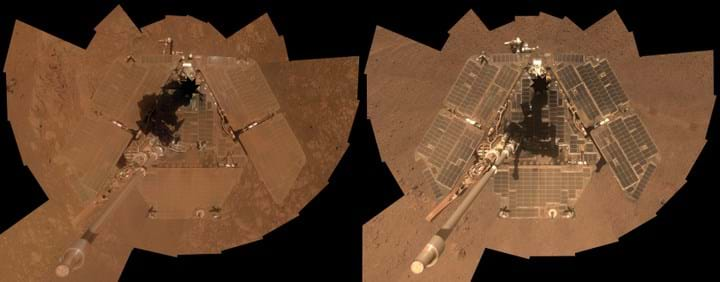Fission reactor in development for future space travel

A PROTOTYPE nuclear fission reactor is currently being tested as part of NASA’s Kilopower project. The reactor has the potential to provide power for crewed missions to Mars as well as robotic deep space travel.
The Kilopower project aims to design a reliable fission reactor that will provide space missions with kilowatts of power. Current power systems include solar panels and radioisotope thermoelectric generators (RTGs) where power comes from the heat generated during the decay of plutonium-238. Solar panels are not ideal as a sole power source for a human base on Mars as they are susceptible to dust storms and reduced sunlight, and RTGs only provide a few hundred watts of power. NASA estimates that a human base on Mars would require around 40 kW of power for a crew of four to six astronauts.
Nuclear fuel is the most energy dense at 80,000,000 MJ/kg compared to 50 MJ/kg for coal or just 1 MJ/kg for any type of battery, making it an ideal power source for space exploration.
Prototype
The fission reactor has a uranium-235 core with sodium heat pipes clamped around it. Heat is transferred through the pipes and converted to electricity with a Stirling engine. The prototype can produce up to 1 kW, and the technology can be upscaled to 10 kW if testing is successful. The reactors are small enough that multiple units could be used on a Martian base and each reactor could produce 10 kW of power continuously for at least ten years.
The system design has already been tested using a depleted uranium core, which has a lower content of fissile uranium-235 than natural uranium and is thus less radioactive. The reactor was then moved to the Nevada National Security Site (NNSS) where testing with a highly-enriched uranium core began in November 2017. These tests involve connecting the power system to the reactor core, verifying how well the hardware is working compared to analytical models, and determining if the technology is ready for space flight development. The tests will conclude in late March with the reactor being used at full power for around 28 hours.
Human missions to Mars
Fission reactors will enable long duration stays by humans on the surface of Mars. The reactors will power human habitats, run equipment, and be used for processing Martian resources such as producing propellant for the return journey.
Solar panels will likely still be used in combination with the fission reactors to add redundancy to the missions, but solar power alone is unreliable. Mars is further from the Sun than the Earth, so it receives less sunlight, particularly at high latitudes. Solar panels also cannot produce power at night and are likely to get covered in dust.
Dust particles on Mars are slightly electrostatic so that they stick to surfaces like solar panels. NASA’s Spirit and Opportunity rovers have had problems with dust covering their solar panels and had to shut down operations during a global dust storm in 2007. Opportunity was the worst affected with power being reduced from 700 to 128 W.
However, a disadvantage of fission reactors on a human base is that shielding would be required to protect the crew and instruments from radiation.

Deep space exploration
Fission reactors could also be used for robotic exploration of the Solar System, as solar panels currently don’t produce enough power to propel a spacecraft beyond the orbit of Jupiter. NASA’s New Horizons mission, which performed a flyby of Pluto in 2015, uses an RTG, although certain instruments had to be switched off during its journey to save power. A similar craft using a fission reactor would not have the same restrictions and would also have the potential for powering additional instruments.
A study on a potential mission to Saturn’s largest moon Titan showed that a 1 kW fission reactor would power all the instruments simultaneously and provide a higher rate of data communications.
Fission reactors are also safer than RTGs in the case of a launch failure, as the radiation levels of a reactor during the launch is several orders of magnitude lower than the RTG.
The Kilopower reactor has the potential to last beyond mission requirements and full power production could be achieved for several decades. The success of the reactor would usher in a new age of space exploration and provide the power needed for the human exploration of Mars.
Recent Editions
Catch up on the latest news, views and jobs from The Chemical Engineer. Below are the four latest issues. View a wider selection of the archive from within the Magazine section of this site.




